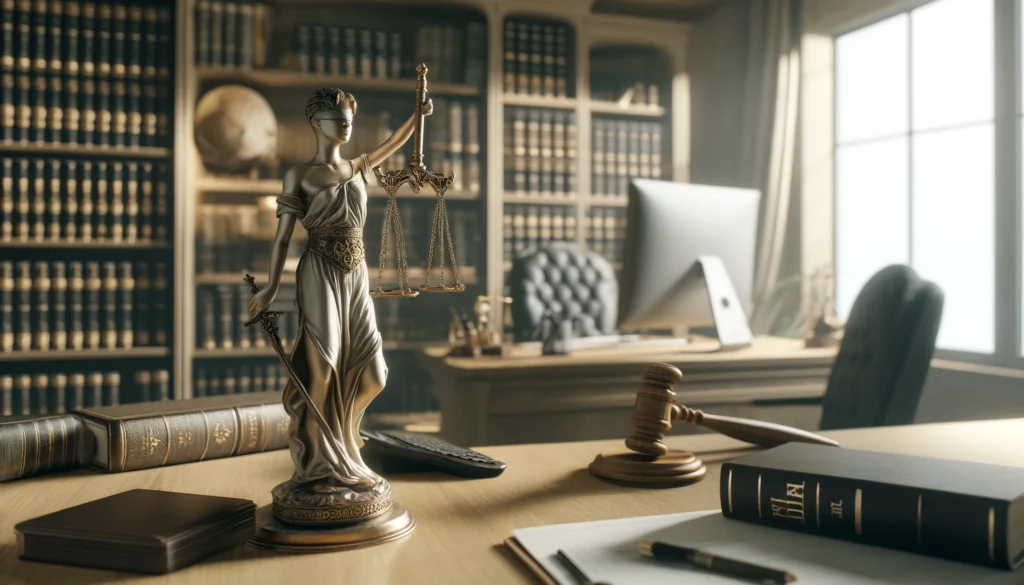
Setting the Stage: Why Embrace AI in Criminal Defense
The legal tech landscape is undergoing significant transformation, pushing the boundaries of traditional law practices. Criminal defense, where stakes are perennially high and timelines rigorous, stands to gain immensely from advancements, especially artificial intelligence (AI). Incorporating AI into legal workflows can dramatically boost efficiency, allowing legal professionals to focus on strategic aspects of defense rather than repetitive tasks.
Speed and accuracy are paramount in the courtroom. As legal databases grow and case complexity increases, the need for tools that can streamline research, drafting, and analysis has never been greater. Embracing AI in criminal defense thus becomes not only an option but a strategic necessity.
ChatGPT Unveiled: Transforming the Paralegal Workflow
Enter ChatGPT and other large language models (LLMs)—technological marvels designed to augment and, in some instances, revolutionize legal workflows. These models excel in natural language processing, making them highly effective for generating legal documentation, conducting research, and even drafting intricate legal arguments.
ChatGPT specifically can assist paralegals and attorneys in numerous ways:
- Legal Drafting: ChatGPT can generate initial drafts of contracts, motions, and trial briefs. By feeding it a set of case facts and relevant legal arguments, the AI can produce a coherent draft that can be further refined.
- Research Enhancement: LLMs can sift through vast amounts of legal texts to find precedents, legal statutes, and case laws pertinent to your case.
- Document Review: AI can expedite document review processes, highlighting key sections, and summarizing long documents.
Also read:
Mastering the Art of Prompting: Creativity Meets Precision
The crux of effectively using ChatGPT lies in the ability to craft precise and comprehensive prompts. A well-structured prompt shapes the quality of the output, making it detailed, relevant, and actionable.
To generate an initial draft for a motion, you might start with a comprehensive prompt:
“Draft a motion for a new trial in a criminal case where the defendant was convicted of burglary. Include arguments based on newly discovered evidence and procedural errors during the trial.”
A good start, but the real magic happens when you refine the prompt to get nuanced legal arguments:
“Draft a motion for a new trial in a burglary case. The grounds are newly discovered evidence, which includes an alibi witness not found during the original trial, and procedural errors such as the inadmissibility of the defendant’s statement due to lack of Miranda warning.”
Through iterative feedback, you can further enhance these drafts:
“Expand the argument focusing on the credibility of the new alibi witness, referencing ‘Strickland v. Washington’ for ineffective assistance of counsel.”
This iterative process ensures a high-quality draft that aligns closely with the intricacies of the case.
Also read:
The Nuts and Bolts: Step-by-Step Guide to Drafting Motions
Utilizing ChatGPT can significantly streamline the process of drafting motions, but a methodical approach ensures the best results.
- Structuring Arguments: Begin with a clear outline of the arguments you need in the motion. Utilize ChatGPT to flesh out these points. For example, structure the argument around procedural errors first, then focus on newly discovered evidence.
- Legal Reasoning and Case Law: Generate a prompt that asks ChatGPT to include relevant case law to support your arguments. An example might be, “Include precedents like ‘Brady v. Maryland’ when discussing withheld evidence.”
- Fact-Checking: While AI is powerful, it is not infallible. Ensure each factual assertion is accurate by cross-referencing with reliable sources. Manually verify citations and case law for correctness.
This step-by-step guide, when combined with human oversight, results in a robust, ready-to-file motion.
Also read:
Quality Control: Enhancing Human-AI Collaboration
AI output must be balanced with human expertise for optimal results. Collaboration between human input and AI-generated content can ensure that the final document is both accurate and compelling.
Best practices include:
- Comprehensive Review: Always review AI-generated drafts thoroughly, checking for legal accuracy and contextual relevance.
- Continuous Refinement: Use iterative feedback to refine content. Update the AI model with new insights and case-specific data for improved future outputs.
Also read:
Ethical Considerations: Navigating the Legal Boundaries
When incorporating AI into legal practice, understanding its limitations is crucial. AI cannot replace human judgment and ethical considerations—such as client confidentiality, data security, and compliance with legal norms—remains paramount. Follow regulatory guidelines and integrate AI responsibly.
Also read:
Future Horizons: The Evolving Role of AI in Legal Practice
The future looks promising as AI continues to evolve, potentially incorporating more advanced features like predictive analytics, real-time legal advice, and enhanced research capabilities. The synergistic future of AI and human expertise promises a more efficient and effective legal system, where both entities complement each other seamlessly.
Also read:
Conclusion: Embracing the AI Augmented Legal Landscape
The integration of AI, particularly LLMs like ChatGPT, represents a quantum leap in the legal profession. This synergy not only enhances efficiency and accuracy but also empowers legal professionals to handle complex cases with greater ease. Embrace these advancements, experiment with AI tools in your practice, and commit to continuous learning to stay ahead in the evolving legal landscape.


